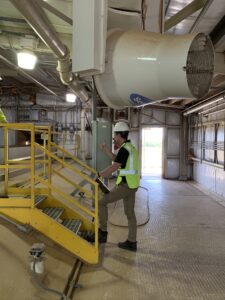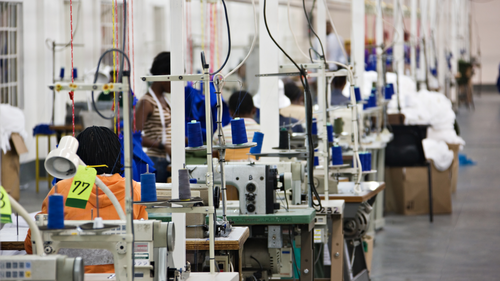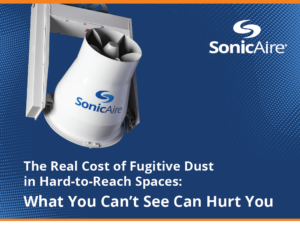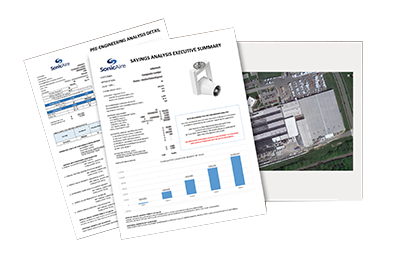The Impact of a Healthy Work Environment
When experts talk about healthy work environments, they aren’t usually referring to physical health. They’re talking about workplaces that are psychologically, mentally, and emotionally healthy.
 The impact of these factors on an organization’s success is proven time and time again. Certainly, unhealthy companies can achieve success. But after a while, the cracks in the facade begin to show. Turnover increases, profits slip, and the customer loses faith.
The impact of these factors on an organization’s success is proven time and time again. Certainly, unhealthy companies can achieve success. But after a while, the cracks in the facade begin to show. Turnover increases, profits slip, and the customer loses faith.
In some ways, the Great Resignation has highlighted companies that create an extraordinary culture and work environment. Increased mobility and employment options make these (along with pay and opportunity for advancement) critical factors in a person’s choice of work location.
However, for most employees, physical health and safety aren’t major concerns. How many marketers or accountants have to consider literal death or dismemberment on the job?
Carpal tunnel syndrome from spending so much time at the keyboard? Possible.
Back trouble caused by sitting improperly for hours on end? Very likely.
Heart disease and weight gain from a sedentary lifestyle? Maybe.
But catastrophic injuries? Not the norm.
For those who work in manufacturing and processing facilities, there are real physical dangers. Even when we discount the loss of life or limb, these operations aren’t known for being the cleanest. Dust clouds fill the air, settling on clothes and hair. The staff can’t leave their work at work because it’s literally stuck to them.
The Real Cost of Manual Dust Cleaning
It isn’t until you sit down and start adding up all of the costs the problem becomes apparent.
It’s Not Just About Money
Most people seem to believe that pay is the primary reason people leave their jobs in manufacturing facilities. Studies have shown that there are other factors at play, though.
How safe, clean, and physically healthy the work environment is – these factors all play a role in retaining an employee.

But improving the pay concerns alone isn’t enough.
After the entire world has seen the benefits of remote work, getting employees to return to their factories hasn’t been easy. Though you’ll never be able to give them an environment as comfortable as home, you can provide them with one that makes them feel safe.
At SonicAire, we’ve been talking a lot about the issue of staffing – and for good reasons.
-
- First of all, we’re a manufacturer. Maintaining a consistent and healthy (both physically and otherwise) staff is key to ensuring we meet the growing demand for our dust control solutions.
- Second, staffing is critically important to maintaining fugitive dust compliance. While we know that our products can mitigate dust buildup in hard-to-reach spaces, many organizations still choose to clean these areas manually. And with staffing shortages, these efforts are more likely to be designated a low priority.
When it comes to any facility, work conditions matter. We can talk all day long about how nice it is to work from home in certain fields. For companies like yours, though, products are made in the building. And that’s where your staff needs to be.
So, imagine two different work environments.
-
- In Company A, dust clouds fill the air. Rings of floating particulate/particles encircle every overhead light. It covers every piece of equipment. The staff (also covered in dust, by the way) has to wear respirators to protect themselves from particulates. Once per month, everything has to shut down so a few people can go up in lifts to blow down or vacuum up dust accumulation.
- At Company B, floating dust is negligible. It primarily ends up on the floor, not on every surface in the building. Masks are optional and primarily for those more concerned with any long-term effects. Regular housekeeping involves occasionally sweeping up dust off the floor.
If you’re given the option of working at one of these two locations, all else being equal, which would you choose?
Obviously, there are plenty of other factors in that decision. But to argue that the health considerations of the shop floor don’t matter is naive. So is the assumption that your company is exempt from the concern. A recent study from Mental Health America, “2022 Mind The Workplace Report,” found that only 23% of employees considered their workplace a “healthy” environment.
The Hidden Cost

Your employees won’t be satisfied when they aren’t safe.
If you aren’t offering them a healthy work environment, you’re not doing all you can for your business, and it may be costing you more than you think.
When considering the bottom line for your business, you already know that risk mitigation has to be a factor. But your bottom line can get complicated when you add in the cost of employee retention and a greater churn rate.
In 2019, Gallop cited over a trillion dollars lost every year from voluntary turnover. And that was before the Great Resignation. When manufacturers struggle to convince employees to return to their factory jobs, as is happening now, a drop in this number isn’t likely.
Gallop made a conservative estimate that the cost of replacing each employee is somewhere between one-half to double the employee’s annual salary. Between loss in production to overtime pay that other employees make based on redistribution of duties, the costs pile up.
You must think of this in relatable circumstances to understand what this cost estimate actually means. If you replace four employees a year and their average salary is $25,000 – you could be spending somewhere between $50,000 to $200,000 in replacing them.
Keep in mind that each loss comes with a decrease in your company’s reputation and a significant loss to your morale. You lose valuable experience when you lose employees, and each preventable departure will make it all the more difficult for you to gain employee loyalty.
Safety is Always Worth the Effort
The same 2019 Gallop article claims that 52% of voluntary departures say “their manager or organization could have done something to prevent them from leaving their job.” It’s a smart policy to look at your company’s voluntary resignations in the same light. Ensuring your employees are safe and that they have the work environment that makes them feel like they’re a priority to your organization is crucial.
Creating a healthy work environment isn’t easy. As they say, if it were easy, everyone would do it. That’s why most manufacturing employers seem to be throwing money at their employees and simply hoping the retention problem goes away.
When you offer your employees a place that provides safety and shows you care about more than just your bottom line, you’ll have a competitive edge over other manufacturing companies. And the healthy environment you create will inevitably support your company’s bottom line.
You may be surprised by the impact dust has on your business. If you’re not sure how your facility stands on combustible dust safety, click here for a Complimentary Dust Management Plan and ROI Analysis. Because making your employees a priority is more important now than ever.
SonicAire Fans – A Cost-Effective Alternative
We’re not going to lie to you. Installing a SonicAire Dust Control Fan System requires an investment. There are very few facilities that can get by with a couple of fans. But the long-term benefits speak for themselves.
SonicAire fans either run for specified periods during the day or all day, depending upon your operations and dust production level. However, they use two different tactics to prevent combustible dust buildup in overhead areas.
First, they clean off higher surfaces with continual airflow. This prevents buildup and eliminates the cleaning of these areas. Second, a properly engineered system creates an Air Barrier to prevent warm air currents from bringing dust up into overhead spaces.
Let’s look at how they impact the costs we’ve highlighted above.
Measuring the Difference
Each facility is different. In manufacturing and processing, operations produce varying levels and types of fugitive dust. But each facility is likely overspending on manual cleaning or simply not cleaning enough.
When you consider the labor, equipment, and lost productivity that goes into manual cleaning practices and then add in the insurance costs, potential fines, and employee dissatisfaction. Is manually cleaning your facility really saving you money?
We’re confident our combustible dust control systems will save your facility money even with the initial investment to purchase and install. But, if you’re not 100% sold, we get it. That’s why we offer free dust management plans with ROI Analysis. These engineered plans recommend the amount and placing of fans to ensure maximum protection from dust buildup.
Click here to request your Free Dust Management Plan.
Or contact us to discuss dust control solutions for your facility.
The Impact of a Healthy Work Environment
When experts talk about healthy work environments, they aren’t usually referring to physical health. They’re talking about workplaces that are psychologically, mentally, and emotionally healthy.
 The impact of these factors on an organization’s success is proven time and time again. Certainly, unhealthy companies can achieve success. But after a while, the cracks in the facade begin to show. Turnover increases, profits slip, and the customer loses faith.
The impact of these factors on an organization’s success is proven time and time again. Certainly, unhealthy companies can achieve success. But after a while, the cracks in the facade begin to show. Turnover increases, profits slip, and the customer loses faith.
In some ways, the Great Resignation has highlighted companies that create an extraordinary culture and work environment. Increased mobility and employment options make these (along with pay and opportunity for advancement) critical factors in a person’s choice of work location.
However, for most employees, physical health and safety aren’t major concerns. How many marketers or accountants have to consider literal death or dismemberment on the job?
Carpal tunnel syndrome from spending so much time at the keyboard? Possible.
Back trouble caused by sitting improperly for hours on end? Very likely.
Heart disease and weight gain from a sedentary lifestyle? Maybe.
But catastrophic injuries? Not the norm.
For those who work in manufacturing and processing facilities, there are real physical dangers. Even when we discount the loss of life or limb, these operations aren’t known for being the cleanest. Dust clouds fill the air, settling on clothes and hair. The staff can’t leave their work at work because it’s literally stuck to them.
It’s Not Just About Money
Most people seem to believe that pay is the primary reason people leave their jobs in manufacturing facilities. Studies have shown that there are other factors at play, though.
How safe, clean, and physically healthy the work environment is – these factors all play a role in retaining an employee.

But improving the pay concerns alone isn’t enough.
After the entire world has seen the benefits of remote work, getting employees to return to their factories hasn’t been easy. Though you’ll never be able to give them an environment as comfortable as home, you can provide them with one that makes them feel safe.
At SonicAire, we’ve been talking a lot about the issue of staffing – and for good reasons.
-
- First of all, we’re a manufacturer. Maintaining a consistent and healthy (both physically and otherwise) staff is key to ensuring we meet the growing demand for our dust control solutions.
- Second, staffing is critically important to maintaining fugitive dust compliance. While we know that our products can mitigate dust buildup in hard-to-reach spaces, many organizations still choose to clean these areas manually. And with staffing shortages, these efforts are more likely to be designated a low priority.
When it comes to any facility, work conditions matter. We can talk all day long about how nice it is to work from home in certain fields. For companies like yours, though, products are made in the building. And that’s where your staff needs to be.
So, imagine two different work environments.
-
- In Company A, dust clouds fill the air. Rings of floating particulate/particles encircle every overhead light. It covers every piece of equipment. The staff (also covered in dust, by the way) has to wear respirators to protect themselves from particulates. Once per month, everything has to shut down so a few people can go up in lifts to blow down or vacuum up dust accumulation.
- At Company B, floating dust is negligible. It primarily ends up on the floor, not on every surface in the building. Masks are optional and primarily for those more concerned with any long-term effects. Regular housekeeping involves occasionally sweeping up dust off the floor.
If you’re given the option of working at one of these two locations, all else being equal, which would you choose?
Obviously, there are plenty of other factors in that decision. But to argue that the health considerations of the shop floor don’t matter is naive. So is the assumption that your company is exempt from the concern. A recent study from Mental Health America, “2022 Mind The Workplace Report,” found that only 23% of employees considered their workplace a “healthy” environment.
The Hidden Cost

Your employees won’t be satisfied when they aren’t safe.
If you aren’t offering them a healthy work environment, you’re not doing all you can for your business, and it may be costing you more than you think.
When considering the bottom line for your business, you already know that risk mitigation has to be a factor. But your bottom line can get complicated when you add in the cost of employee retention and a greater churn rate.
In 2019, Gallop cited over a trillion dollars lost every year from voluntary turnover. And that was before the Great Resignation. When manufacturers struggle to convince employees to return to their factory jobs, as is happening now, a drop in this number isn’t likely.
Gallop made a conservative estimate that the cost of replacing each employee is somewhere between one-half to double the employee’s annual salary. Between loss in production to overtime pay that other employees make based on redistribution of duties, the costs pile up.
You must think of this in relatable circumstances to understand what this cost estimate actually means. If you replace four employees a year and their average salary is $25,000 – you could be spending somewhere between $50,000 to $200,000 in replacing them.
Keep in mind that each loss comes with a decrease in your company’s reputation and a significant loss to your morale. You lose valuable experience when you lose employees, and each preventable departure will make it all the more difficult for you to gain employee loyalty.
Safety is Always Worth the Effort
The same 2019 Gallop article claims that 52% of voluntary departures say “their manager or organization could have done something to prevent them from leaving their job.” It’s a smart policy to look at your company’s voluntary resignations in the same light. Ensuring your employees are safe and that they have the work environment that makes them feel like they’re a priority to your organization is crucial.
Creating a healthy work environment isn’t easy. As they say, if it were easy, everyone would do it. That’s why most manufacturing employers seem to be throwing money at their employees and simply hoping the retention problem goes away.
When you offer your employees a place that provides safety and shows you care about more than just your bottom line, you’ll have a competitive edge over other manufacturing companies. And the healthy environment you create will inevitably support your company’s bottom line.
You may be surprised by the impact dust has on your business. If you’re not sure how your facility stands on combustible dust safety, click here for a Complimentary Dust Management Plan and ROI Analysis. Because making your employees a priority is more important now than ever.
The Real Cost of Manual Dust Cleaning
It isn’t until you sit down and start adding up all of the costs the problem becomes apparent.
SonicAire Fans – A Cost-Effective Alternative
We’re not going to lie to you. Installing a SonicAire Dust Control Fan System requires an investment. There are very few facilities that can get by with a couple of fans. But the long-term benefits speak for themselves.
SonicAire fans either run for specified periods during the day or all day, depending upon your operations and dust production level. However, they use two different tactics to prevent combustible dust buildup in overhead areas.
First, they clean off higher surfaces with continual airflow. This prevents buildup and eliminates the cleaning of these areas. Second, a properly engineered system creates an Air Barrier to prevent warm air currents from bringing dust up into overhead spaces.
Let’s look at how they impact the costs we’ve highlighted above.
Measuring the Difference
Each facility is different. In manufacturing and processing, operations produce varying levels and types of fugitive dust. But each facility is likely overspending on manual cleaning or simply not cleaning enough.
When you consider the labor, equipment, and lost productivity that goes into manual cleaning practices and then add in the insurance costs, potential fines, and employee dissatisfaction. Is manually cleaning your facility really saving you money?
We’re confident our combustible dust control systems will save your facility money even with the initial investment to purchase and install. But, if you’re not 100% sold, we get it. That’s why we offer free dust management plans with ROI Analysis. These engineered plans recommend the amount and placing of fans to ensure maximum protection from dust buildup.
Click here to request your Free Dust Management Plan.
Or contact us to discuss dust control solutions for your facility.

GET YOUR FREE GUIDE:
The Real Cost of Fugitive Dust in Hard-to-Reach Spaces
What You Can’t See Can Hurt You
To help protect your workplace, we’ve compiled the following resource, The Real Cost of Fugitive Dust in Hard-to-Reach Spaces: What You Can’t See Can Hurt You. In it, we identify seven ways fugitive dust is likely impacting your facility and its profitability.
These costs go beyond housekeeping and explain why you should be preventing dust buildup to protect the bottom line, not just to stay in compliance.

